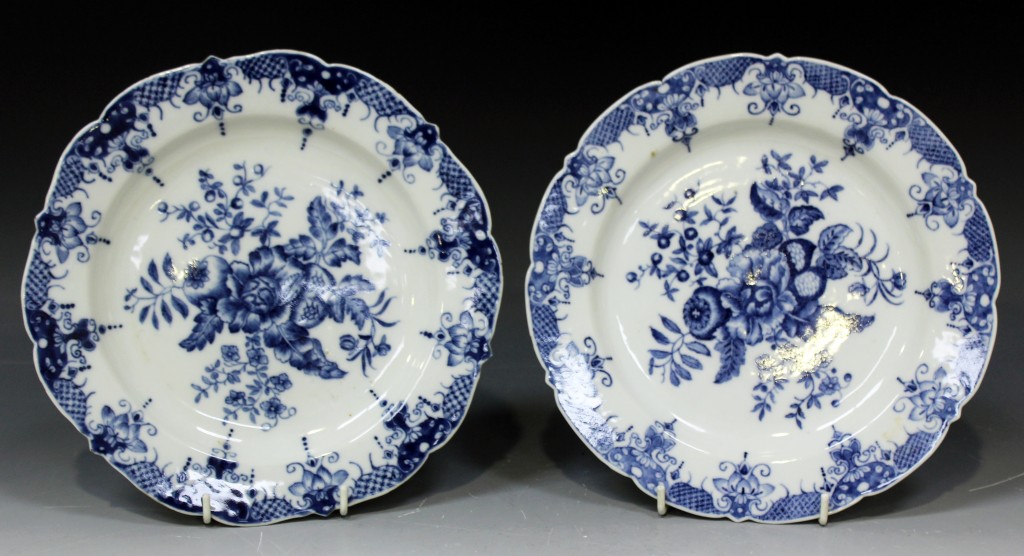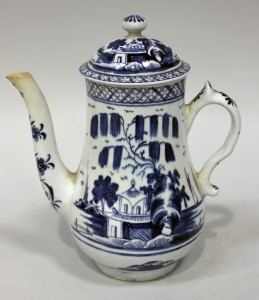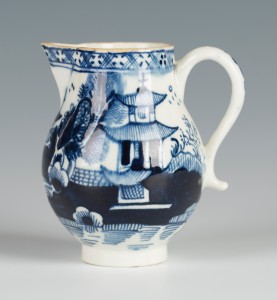
Blue and white ceramics have always delighted me and none more so than 18th century English porcelain. The famous Sussex based ceramic historian, the late Geoffrey Godden, always maintained that ‘blue and white is the right colour for porcelain’.
These individually handmade objects were made for use and this domesticity lends a particular charm to these beautiful and affordable objects which are often decorated with anglicized interpretations of Chinese decoration. There is an honest un-laboured quality in these depictions.

English blue and white porcelains date from the mid-to late 1740s onwards. Amongst the early makers were Bow in London and Worcester.
Founded in 1744 by Thomas Frye and Edward Heylyn Bow was one of the first two porcelain manufacturers in England. Bow’s output included fine figure models and vases. However, its primary objective was the production of much less expensive blue and white porcelain imitating the Chinese porcelains which arrived in the East India Company warehouses as part of the thriving export trade to this country. Bow’s blue and white was made in large quantities, leading many ceramic historians to believe that it was the largest porcelain manufactory in the 18th century. Take for example the Bow blue and white porcelain coffee pot and cover dating from 1765 painted in the Chinese style with pavilions and trees within trellis borders.

The handsome baluster shape of the Bow coffee pot is also employed in the charming Lowestoft cream jug. Made in about 1775 it again shows the influence of the imported Chinese porcelains of the time.

The Worcester factory came in to being in 1752 when Benjamin Lund’s highly sophisticated and experimental Bristol factory merged with Dr John Wall’s Worcester. The Chinese taste was once again highly influential.
Largely thanks to the work of Robert Hancock, who would become a partner of the firm, by the late 1750s Worcester had become pre-eminent in the use of transfer printing on porcelain in terms of output, quality, clarity and aesthetic design. The ‘Pine Cone Group’ pattern was the most celebrated of all the underglaze blue transfer prints at Worcester. It was principally used on plates, as seen here, and baskets of the 1770s. It was copied by Lowestoft and other English factories. The ‘Pine Cone Group’ pattern was even copied by the Chinese as shown by the extremely rare pair of plates illustrated.
Prices for 18th century English blue and white porcelain remain accessible for now, with examples like these fetching from low to mid-hundreds of pounds in Toovey’s specialist auctions. As values for Chinese porcelain continues to rise these English interpretations of the Oriental taste represent great value. And after all blue and white is the right colour for porcelain!
By Rupert Toovey, a senior director of Toovey’s, the leading fine art auction house in West Sussex, based on the A24 at Washington. Originally published in the West Sussex Gazette.